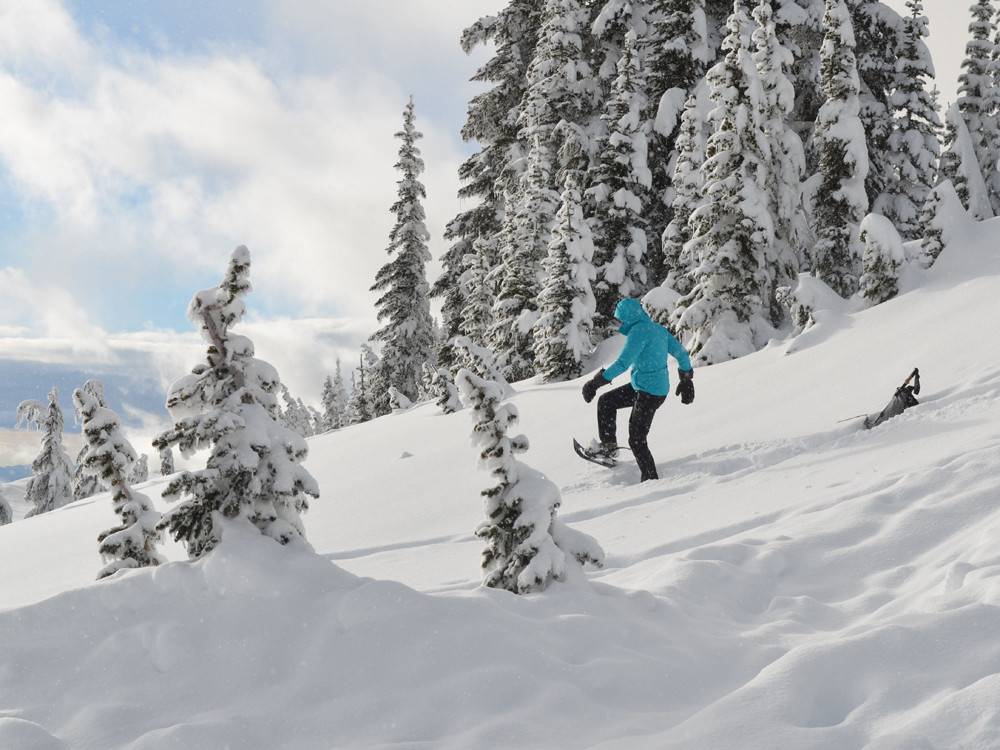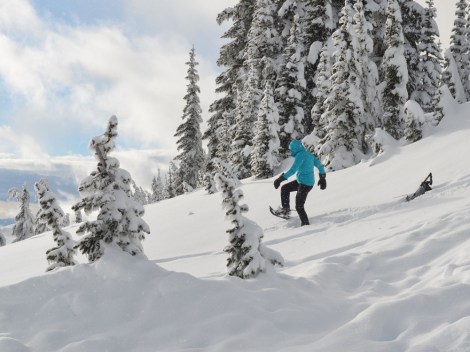
Kate SheppardInterior Secretary Sally Jewell has faced an uphill battle in Washington as she tries to implement her ambitious agenda. In February, she went snowshoeing on Mount Rainier to see firsthand the effects of climate change.
On a brisk Monday afternoon in February, with the sun finally peeking out from behind the clouds after a passing snow squall, a group of researchers and park rangers strapped on snowshoes and hiked about half a mile to an overlook facing the Nisqually Glacier in Mount Rainier National Park. Scientists have been monitoring the surface elevation of the Nisqually since the 1930s, tracking the peaks and dips in the ice as the glacier moves down the valley. It is the longest record of this type of measurement for any glacier in the western hemisphere — and, in recent years, a key piece of evidence of the devastating effects of climate change in this iconic park.
Dressed in a pale blue snow jacket and purple beanie, Sally Jewell listened intently as the scientists described the years of research dedicated to the park’s glaciers. The secretary of the Interior eyed a graph charting changes in the Nisqually’s elevation and noted the drop-off between 2002 and 2011. Yes, the scientists confirmed, that’s one sign of how climate change is impacting the glaciers. As the climate has warmed, the Nisqually has also retreated. It once plunged down the valley, running just behind the Paradise Visitor Center. But now, even in the dead of winter, its tail end is barely visible, peeking out ever so slightly in the distance. The glacier’s retreat has been dramatic: More than a mile since the early records. Scientists have documented more than 700 feet of retreat since 2003 alone.
President Barack Obama has given climate change a prominent place on the agenda for his second term, and Jewell has been one of the administration’s primary emissaries on the issue. She has spent much of the past year traveling the country to hear from scientists like the team at Rainier, to raise awareness of their work and to tout new wind and solar projects on public lands.
“I don’t have all the answers in this job, but I do have a big megaphone,” she told a group of scientists and officials gathered for a meeting on climate change at the University of Washington the day after her Rainier visit. “And the guy I work for has an even bigger megaphone.”
Addressing climate change is just part of Jewell’s ambitious agenda. She took office in April 2013 pledging to invest more in the future of the country’s national parks, and to engage a new generation of Americans — one more concerned with Grand Theft Auto than the Grand Canyon — in the great outdoors. Obama hailed her as “an expert on the energy and climate issues that are going to shape our future,” and charged her with finding a balance between the oft-competing environmental and economic potential of the country’s public lands.
But much of her first year has been spent dealing with more basic problems — like how to pay for these ambitious projects. Asked what the biggest challenge of her new job has been so far, Jewell doesn’t hesitate. “The budget,” she said. “Navigating through a three-week shutdown, navigating through sequestration, furloughs, and being in the forever business.”
“The forever business” is a term Jewell employs frequently to refer to Interior’s responsibility for overseeing 640 million acres of public lands — a full 28 percent of the total U.S. landmass — which includes 401 National Park Service sites, as well as vast tracts of the West used for grazing and energy development.
“People expect us to do things for the long term,” she explained. “This is the longest-term focused job that I’ve had, and yet it’s the shortest-term focused budget that I’ve ever operated under. That makes no sense.”
Congressional funding for the National Park Service, which will celebrate its centennial in 2016, has declined in recent years, even as the parks themselves face mounting costs for routine maintenance, as well as new infrastructure challenges related to climate impacts. Moreover, the past year’s budget battles have hurt employee morale and sent scientists scrambling to preserve key programs.
“It’s been very difficult for staff to know whether they have a job or not, whether they continue their research or not,” Jewell said.
Indeed, at Mount Rainier, the disappearing glacier isn’t the only source of worry for Jewell and the scientists. Funding for the program that monitors Nisqually’s elevation changes was cut last year, and the geologist who was supposed to collect the data has been put on long-term furlough, jeopardizing the entire project.
“We can’t let it go,” said Paul Kennard, a geomorphologist with the National Park Service. Somehow, the team said, they hoped to figure out a solution to keep the research going.
The budget situation is just the most obvious challenge Jewell has faced in her first year at Interior, an anniversary she’ll mark on April 12. Other challenges, such as the struggle to get the Senate to confirm her deputies and a House effort to cut off the administration’s best tool for granting new protections for public lands, have been less visible, but no less significant.
Together, they have at times made Jewell’s first year in Washington one of frustration.

Kate SheppardJewell listens to Mount Rainier park rangers and scientists describe the park’s long-term glacier monitoring program. Funding for one type of glacier monitoring in the park was cut last year.
“I‘ve never been in a job before where, no matter what I do, somebody is unhappy with me,” Jewell told HuffPost. “I have found that just about every decision I make gets sued,” she added.
This is especially true when it comes to decisions about how public lands are used. The agency must balance competing priorities when it does or does not lease public lands for oil and gas development, or decides what should be preserved for its environmental and recreational values. One way Jewell has tried to bring equilibrium is by developing new “master leasing plans” for vast regions of Wyoming, Utah, Montana, and Colorado.
The plans seek to identify areas of high value for oil and gas development, as well as areas with significant ecological value, and leave the most precious areas undeveloped. For areas with both identified values, the plan would institute tougher rules on development.
Industry groups don’t love the new approach, but Jewell believes it will help “de-conflict” the issue and fend off the fights between environmentalists and the oil and gas industry that have become utterly predictable in every major leasing decision.
“If there’s one thing we will all benefit from, it’s spending less time in the courtroom and more time actually crafting a future that understands the complexity of our landscapes, and works together collectively to shape them in a sustainable way for the future,” said Jewell.
To that end, Interior announced a new strategy on Thursday morning for mitigating the impacts of development on public lands, one that looks at ecological issues across the entire landscape, rather than individual leases.
“This job is full of difficult choices,” she said. “You’ve got some folks that want no regulation and others that want lots of regulation, so if you’re walking a fine line trying to say what is the appropriate amount of regulation necessary to protect the environment, or generate an appropriate return for the taxpayer, or whatever that might be, you’re not going to make both sides happy.” She’s taken a similar approach to endangered species, an issue that often pits western state governments and ranchers against conservation groups.
“You can’t make everybody happy all the time, but I think understanding where they’re coming from is important,” she said.
Environmentalists generally cheered Jewell’s appointment last year. Obama plucked Jewell from the retail giant Recreation Equipment Inc. (REI), where she had served as CEO since 2005. Jewell is a lifetime Pacific Northwesterner. Her family moved to Seattle from England when she was 3 years old, and she studied mechanical engineering at the University of Washington. She met her husband, Warren, also an engineer, while in college. After school, the pair worked for Mobil Oil in Oklahoma and Colorado, and Jewell has bragged about fracking wells during her three years with the company. She returned to Washington in 1981 and spent 19 years in commercial banking before moving to REI in 2000 to serve first as its chief operating officer, and then as CEO five years later.
Environmental advocates loved that she brought to her role as Interior secretary an unabashed appreciation for the outdoors and tested business acumen, if minimal political experience. With her more than eight years on the board of directors of the National Parks Conservation Association, they saw her as one of their own.
Republicans in the Senate were less enthusiastic. Sen. Lisa Murkowski (R-Alaska), the top Republican on the Energy and Natural Resources Committee, called Jewell’s long history of working on conservation issues “unsettling” during her confirmation hearing.
Jewell’s allies, however, have found that they aren’t necessarily going to get their way. For example, she’s supportive of hydraulic fracturing on public lands, as long as it is regulated — a position that has created tension with some in the environmental community.
But most say they understand where Jewell is coming from.
“I applaud her for the way she’s reached out to the diverse stakeholders that have an interest in public lands, trying to find balanced solutions,” said Jamie Williams, president of The Wilderness Society. “My impression is that she’s very interested in hearing everyone’s perspective.”
Williams also credited Jewell, who unlike most previous secretaries came to the job with no prior political experience, with “bringing a fresh business perspective that’s focused on getting things done.”
Others, however, say her first year has been challenging for largely the same reason.
“She clearly doesn’t seem to understand how Washington works,” said one D.C.-based environmentalist, who spoke on the condition of anonymity to speak more openly about Jewell’s first year. “You need to work with other people, bring in coalitions — stuff that is second nature to someone that has been elected to office before. You have to get people to like you. I think she hasn’t figured that out yet. … Politicians know how to do that, because they know how to get elected.”
The environmentalist said that during the Interior Department holiday party last year, Jewell looked uncomfortable and ready to leave. Her predecessor, Ken Salazar, who had served as a U.S. senator and Colorado attorney general before taking over Interior, “knew how to hang out, work the room, be friendly, be magnanimous,” the person said. “She seems to not have figured that out yet.”
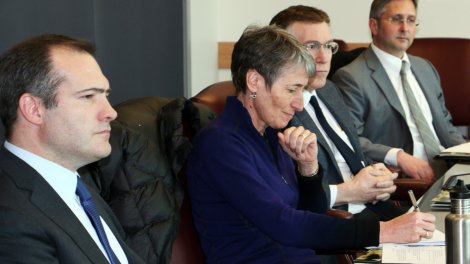
U.S. Department of the InteriorJewell at a BLM meeting in Oregon, in February 2014.
If Jewell expected to come to Washington and start running Interior with the decisive authority of a corporate executive, congressional Republicans quickly disabused her of that notion. Conservative lawmakers have blocked the confirmation of most of Jewell’s deputies, a situation, she says, that keeps her up at night.
“Frankly, the games that are played in the confirmation process are frustrating,” said Jewell. “That was a surprise. I wasn’t expecting that.”
On Feb. 27, the Senate finally confirmed Michael Conner to serve as deputy interior secretary, seven months after he was first nominated. On April 8, the Senate confirmed Neil Kornze as director of the Bureau of Land Management, a confirmation that’s been pending since last November. Six more nominees, including the head of the U.S. Geological Survey, the director of the Bureau of Reclamation, and the assistant secretary for land and minerals management are all still waiting on the Senate to act.
Obama nominated Rhea Suh to serve as assistant secretary for Fish, Wildlife, and Parks, last October. Suh had already served at Interior as assistant secretary for Policy, Management, and Budget since May 2009. But her nomination to the new post stalled in the Senate for months. She was finally approved in the Energy and Natural Resources Committee on March 27, on a party-line vote. Republicans on the committee blocked her in protest of what they saw as her “opposition to natural gas development.” Suh is still awaiting confirmation by the full Senate.
Jewell said that the delays have made it harder to accomplish her agenda. “I’ve got several people in flux, lots of people in acting positions,” said Jewell. “I want to get that done so we can really work to support the mission of the Department of Interior and what the career staff expects us to do, in terms of providing support. So that’s something that has been a bit frustrating.”
Environmentalists, too, hope the confirmation of those deputies will make it possible for Jewell to take more aggressive action. “I think it’s taken her a little longer to get started than we all thought,” said one conservation advocate, who requested anonymity to speak freely.
“She’s prioritized what we see as the low-hanging fruit,” said the advocate. “We’d like her to see her make some serious progress on the more challenging issues.”
As the most public face of the administration’s work on climate, Jewell has kept up a vigorous travel schedule. She appeared on MSNBC on April 1 to discuss a recent submarine trip to the Arctic Circle, where she saw firsthand the thinning ice. “The impact of climate change is everywhere,” she told host Andrea Mitchell. Jewell sees that advocacy for the government’s efforts as one of her central roles.
“I think one of the things that I can do is raise awareness, particularly among our elected officials, of the important work that’s going on here that I don’t think that they’re aware of. Part of that’s on our back,” said Jewell. “We have to do a better job of helping the American public know what’s happening and what our colleagues in the federal family are doing, why it matters to them.”
On Oct. 31, 2013, she gave a rabble-rousing speech at the National Press Club, where she outlined the administration’s second-term policy goals and castigated the budget fights in Washington as the “nuttiest thing a business person has ever heard of.”
“Do we want a legacy of short-sighted funding and partisan gridlock? I don’t think so,” she said to the crowd. “The real test of whether you support conservation is not whether you say it in a press conference. It’s whether you fight for it in a budget conference.”
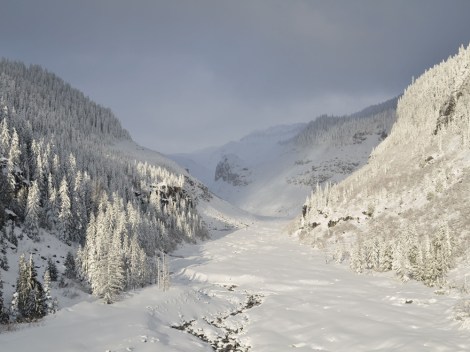
Kate SheppardThe view from a park road facing Mount Rainier’s Nisqually Glacier. Climate change has caused the glacier to retreat dramatically in recent years, scientists have documented.
Jewell’s signature issue so far is perhaps her effort to get more young people interested in the great outdoors. That initiative, known as the 21st Century Conservation Service Corps, was formulated under her predecessor Salazar in 2011, but it was Jewell who signed the secretarial order on March 20 that lays out the program’s goals.
Jewell’s vision for the program is to create partnerships in 50 cities that will get 10 million more children and teens involved in outdoor education and service, and engage more young adults and veterans in job training for conservation. The president’s 2015 budget request calls for $50.6 million for this type of youth-oriented programming, a 37 percent increase from the 2014 budget.
But given the never-ending budget crisis in Washington, Jewell isn’t betting on Congress alone. She’s also seeking $20 million in private and philanthropic funding for the initiative. “In a time of constrained resources, we should be looking for innovative ways to achieve the same margin of excellence,” Jewell said in a statement announcing the plan.
Jewell is seeking alternatives to the congressional stalemate to address other problems as well. She has taken a tough stance on protecting new lands under the Antiquities Act, the 1906 law that allows the president to designate new national monuments. In her National Press Club speech last October, Jewell was firm. “Congress needs to get moving to pass dozens of locally supported bills,” she said. “If Congress doesn’t step up to act to protect some of these areas that have been brought forward by communities, then the president will act.” Obama himself alluded to increasing such designations in his most recent State of the Union address.
Since then, Congress has moved to designate one new wilderness area, Michigan’s Sleeping Bear Dunes, the first it’s approved in five years. And the administration has designated one national monument so far this year, a 1,665-acre expansion of the California Coastal National Monument on the Mendocino coast.
But that move prompted outrage from the Republican-controlled House, which responded in March by passing a law to curb the president’s authority to designate further monuments. The bill’s author, Rep. Rob Bishop (R-Utah), called the California designation “purely political” and argued that it “undermines sincere efforts to reach consensus on questions of conservation.”
In an interview, Jewell defended the administration’s use of the law. “It’s been used by 16 presidents, Republican and Democrat,” said Jewell. “I think that it’s a very important tool that should be used thoughtfully.”
Many of Jewell’s toughest challenges are still ahead. There are still open questions about how the administration will address emissions related to oil, gas, and coal development on public lands.
On March 28, the White House released an inter-agency strategy for cutting methane emissions from oil and gas operations, coal mining and agriculture. The strategy calls for BLM to establish new rules for capturing emissions from coal mining, and to update standards for emissions from venting and flaring in oil and gas operations on public lands. But at this point, the strategy is a directive, not an actual change in policy. It will be up to the Interior Department, and Jewell, to determine how tough those rules will actually be.
While environmental groups say the methane plan will help meet climate goals, they also want Interior to take steps to reduce the development of fossil fuels on public lands. Currently in the U.S., 42 percent of coal, 26 percent of oil, and 18 percent of natural gas are extracted from public lands. While the administration has talked a lot about curbing climate change, slowing development on public lands hasn’t really been on the table.
One way the administration could affect extraction rates would be to raise the royalties paid by companies to develop fossil fuels on public lands. In December, the Government Accountability Office dinged Interior for not instituting procedures to update onshore oil and gas royalty policies, which have remained unchanged for more than 25 years.
As for coal, the biggest source on public lands lies in the Powder River Basin of northeastern Wyoming and southeastern Montana. It is the largest coal-producing region in the continental U.S., and 40 percent of U.S. coal is mined there. But a GAO report issued in February found that the coal leasing program was not competitive enough, and was low-balling the amount coal companies pay to the federal government for leases. In response to that report, DOI has said it is “fully committed to ensuring that taxpayers receive a fair return” on coal development on public lands, and is “actively strengthening” BLM’s coal leasing program.
“It would be great if DOI could be really active in pushing back on climate change,” said Athan Manuel, director of the lands protection program at Sierra Club. “The best way to start on that would be to keep oil, gas, and coal in the ground on public lands.”
When Obama announced Jewell’s nomination last year, he referenced her active lifestyle, noting that, “For Sally, the toughest part of this job will probably be sitting behind a desk.”
Snowshoeing Mount Rainier in February, her love for the outdoors was clear. Rainier is practically her backyard — just 54 miles southeast of Seattle, where it’s visible in the distance on a clear day. She has summited Rainier seven times, out of 10 attempts, and fondly recalls trips as a child to the mountain and environs.
“As a Northwesterner, it’s such an iconic spot on the landscape, and I’ve just had so much enjoyment from coming here with family and friends, and having so many experiences that are memorable,” Jewell said after her day on the mountain. “It’s true with the other national parks in the area, and even around the country, but this is close to home and very visible and special.”
Jewell seemed very happy to be back in the Pacific Northwest, away from the other Washington. She watched the hometown Seahawks defeat the Denver Broncos in the Super Bowl with her two adult children, and she slept in her own bed in Seattle.
The morning after the hike, she crammed in a trip to her downtown Seattle gym and a haircut with her favorite stylist, all before an 8:30 a.m. rendezvous with her security detail to head to another event. It was good to be home. She showed up to her Tuesday meeting dressed in a purple wool pullover and hiking pants, and bragged to her security detail that she’d taken the bus downtown — something she definitely would not be allowed to do back in D.C.
Still, despite the frustrations of her time in the capital, Jewell says she has no second thoughts about taking the job. “No,” she said. “You sign up, and you’re all in. No regrets.”
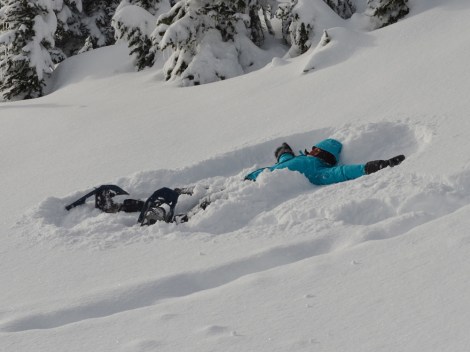
Kate SheppardJewell in her element on Mount Rainier.
 This story was produced by The Huffington Post as part of the Climate Desk collaboration.
This story was produced by The Huffington Post as part of the Climate Desk collaboration.

